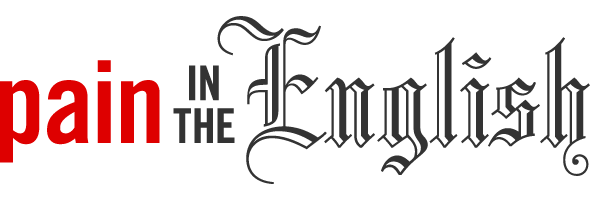Username
JDawg
Member Since
August 29, 2025
Total number of comments
2
Total number of votes received
0
Bio
Latest Comments
Left or right single quote?
- August 29, 2025, 2:34pm
This question lives at the intersection of typography, style guides, and history of print practice. Let’s break it down:
1. The Two Marks in Play
‘ (U+2018 LEFT SINGLE QUOTATION MARK, also called “curly open single quote”)
’ (U+2019 RIGHT SINGLE QUOTATION MARK, also used as the typographic apostrophe)
When abbreviating a year (e.g., ’25 for 2025), what you really want typographically is an apostrophe (the same glyph as the closing single quotation mark).
2. What Style Guides Say
Chicago Manual of Style (CMOS): Explicitly advises using the apostrophe (’) for omitted digits in years, e.g., the class of ’89. It warns against the frequent mistake of using the opening single quote (‘).
Associated Press (AP) Stylebook: Same — the apostrophe/closing single quote should precede the two digits.
Modern Language Association (MLA): Uses the apostrophe for omitted numbers, consistent with Chicago.
American Psychological Association (APA): Doesn’t deal with this as directly, but its general typography rules align with Chicago and MLA — apostrophe, not open quote.
So the consensus in major academic and publishing authorities is ’ (closing single quotation mark / apostrophe).
3. Who Uses the Wrong Mark?
The mistaken use of ‘ (open single quotation mark) tends to come from:
Word processors or typesetting defaults where "smart quotes" automatically insert an opening single quote if the character follows a space.
Non-typographic sources such as blogs, social media, or informal writing guides, where people don’t distinguish between straight apostrophes (') and curly quotes.
Some British publishing traditions (especially mid-20th century) occasionally show “abbreviated years” starting with an opening single quote, but this is now generally considered a mis-set or outdated practice.
4. Why the Apostrophe (’) Is Correct
The logic is that you are omitting characters (the first two digits of the year).
An apostrophe is the established mark for omission (e.g., don’t for do not, rock ’n’ roll for and).
Therefore, ’25 is correct, not ‘25.
5. Historical Background
In early typewritten documents (using straight quotes '), there was no distinction between opening and closing single quotes or apostrophe — it was just a vertical stroke.
With the rise of professional typesetting and later “smart quotes,” computers began trying to guess whether a mark should curl left (‘) or right (’). That’s why many people ended up with ‘89 when they typed a straight quote before a space and two digits.
Professional style guides stepped in to clarify: it should always be the apostrophe (’).





Left or right single quote?
This question lives at the intersection of typography, style guides, and history of print practice. Let’s break it down:
1. The Two Marks in Play
‘ (U+2018 LEFT SINGLE QUOTATION MARK, also called “curly open single quote”)
’ (U+2019 RIGHT SINGLE QUOTATION MARK, also used as the typographic apostrophe)
When abbreviating a year (e.g., ’25 for 2025), what you really want typographically is an apostrophe (the same glyph as the closing single quotation mark).
2. What Style Guides Say
Chicago Manual of Style (CMOS): Explicitly advises using the apostrophe (’) for omitted digits in years, e.g., the class of ’89. It warns against the frequent mistake of using the opening single quote (‘).
Associated Press (AP) Stylebook: Same — the apostrophe/closing single quote should precede the two digits.
Modern Language Association (MLA): Uses the apostrophe for omitted numbers, consistent with Chicago.
American Psychological Association (APA): Doesn’t deal with this as directly, but its general typography rules align with Chicago and MLA — apostrophe, not open quote.
So the consensus in major academic and publishing authorities is ’ (closing single quotation mark / apostrophe).
3. Who Uses the Wrong Mark?
The mistaken use of ‘ (open single quotation mark) tends to come from:
Word processors or typesetting defaults where "smart quotes" automatically insert an opening single quote if the character follows a space.
Non-typographic sources such as blogs, social media, or informal writing guides, where people don’t distinguish between straight apostrophes (') and curly quotes.
Some British publishing traditions (especially mid-20th century) occasionally show “abbreviated years” starting with an opening single quote, but this is now generally considered a mis-set or outdated practice.
4. Why the Apostrophe (’) Is Correct
The logic is that you are omitting characters (the first two digits of the year).
An apostrophe is the established mark for omission (e.g., don’t for do not, rock ’n’ roll for and).
Therefore, ’25 is correct, not ‘25.
5. Historical Background
In early typewritten documents (using straight quotes '), there was no distinction between opening and closing single quotes or apostrophe — it was just a vertical stroke.
With the rise of professional typesetting and later “smart quotes,” computers began trying to guess whether a mark should curl left (‘) or right (’). That’s why many people ended up with ‘89 when they typed a straight quote before a space and two digits.
Professional style guides stepped in to clarify: it should always be the apostrophe (’).